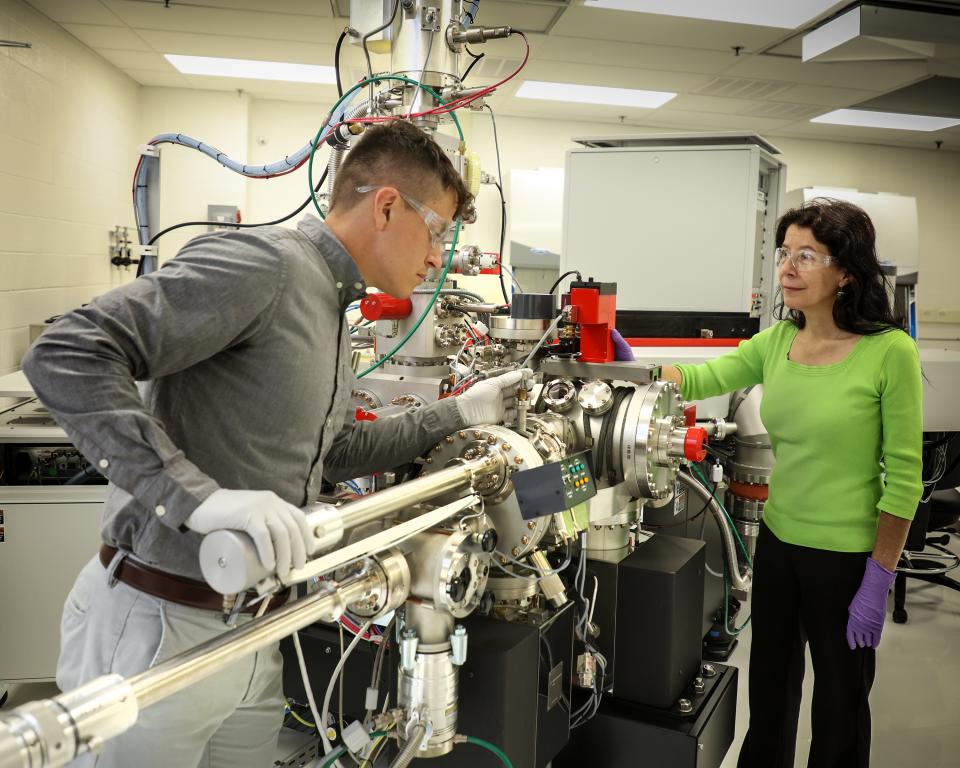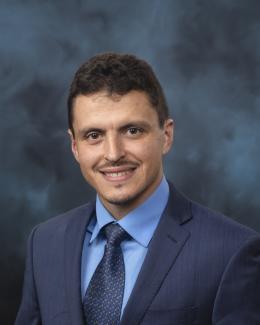
The Ultra-Trace Forensic Science Center (UFSC) at the US Department of Energy’s (DOE’s) Oak Ridge National Laboratory (ORNL) recently completed the installation of one of DOE’s most powerful microprobes that will allow for high-resolution analysis of nuclear fuel cycle materials.
The NanoSIMS 50L—a nanoscale secondary ion mass spectrometer with a resolution down to 50 nanometers—is used across the world for numerous applications in isotope and trace element investigation, from microbiology research into the metabolic function of single cells to space science that analyzes grains of interplanetary dust. Although one of three such machines in the national laboratory system, ORNL’s NanoSIMS will be the only one focused solely on fuel cycle processes and analysis studies.
“When we started the pursuit of a NanoSIMS 7 years ago, we made it clear the machine would be dedicated to our nuclear security missions,” said Brian Anderson, Nuclear Security Advanced Technologies group leader and UFSC manager. “Because of that, it really interested our sponsors, as it showed ORNL’s commitment to solving many of their problems.”
Generally, analysis of nuclear fuel cycle processes occurs on a large scale by taking a bulk sample, dissolving it, and measuring the ratios of different isotopes. But when there are multiple sources of materials in a single bulk sample, the results can be difficult to interpret. With the NanoSIMS, ORNL researchers will gain a closer look at and a better understanding of chemical reactions related to processing uranium and plutonium products.
“We have great tools at the lab for nanoscale chemical imaging and nanoscale structural imaging, and this instrument completes the circle when it comes to isotope measurements,” Anderson said. “It will allow us to work on individual solid samples and provide excellent precision and accuracy in measuring one isotope against another in a small field of view.”
Anderson cited the excellent collaborative effort of ORNL’s Facility and Operations Directorate (F&O), UFSC’s lab space manager Jeremiah Gruidl, and newly hired isotope geochemists Julie Smith and Alex Zirakparvar in getting the instrument up and running in a drastically shortened timeframe. Generally, the turnaround time—from placing the order for a NanoSIMS until its installation—is 2 years; however, the manufacturer CAMECA offered a new instrument in less than half that time.
“This experience is a testament to F&O for how they were able to do lab modifications and general facility support under a tight schedule,” Anderson said. “Jeremiah was also excellent in leading efforts to get the lab space ready.”
Attention now turns to developing the necessary quality controls and procedures for the DOE and National Nuclear Security Administration-sponsored instrument, with Smith and Zirakparvar spending the next 12 months executing a qualification commissioning plan. The effort will include several demonstration experiments to confirm capabilities to sponsors and collaborators.
Although the first year is not expected to include any sponsored analytical work, Anderson said requests have already started rolling in for various research projects using the NanoSIMS. Although the utilization rate already is estimated to be near capacity in the summer of 2018, UFSC still expects to pursue a select number of open science projects with strategic partners around ORNL.
ORNL is managed by UT-Battelle for the Department of Energy’s Office of Science, the single largest supporter of basic research in the physical sciences in the United States. DOE’s Office of Science is working to address some of the most pressing challenges of our time. For more information, please visit http://energy.gov/science.





